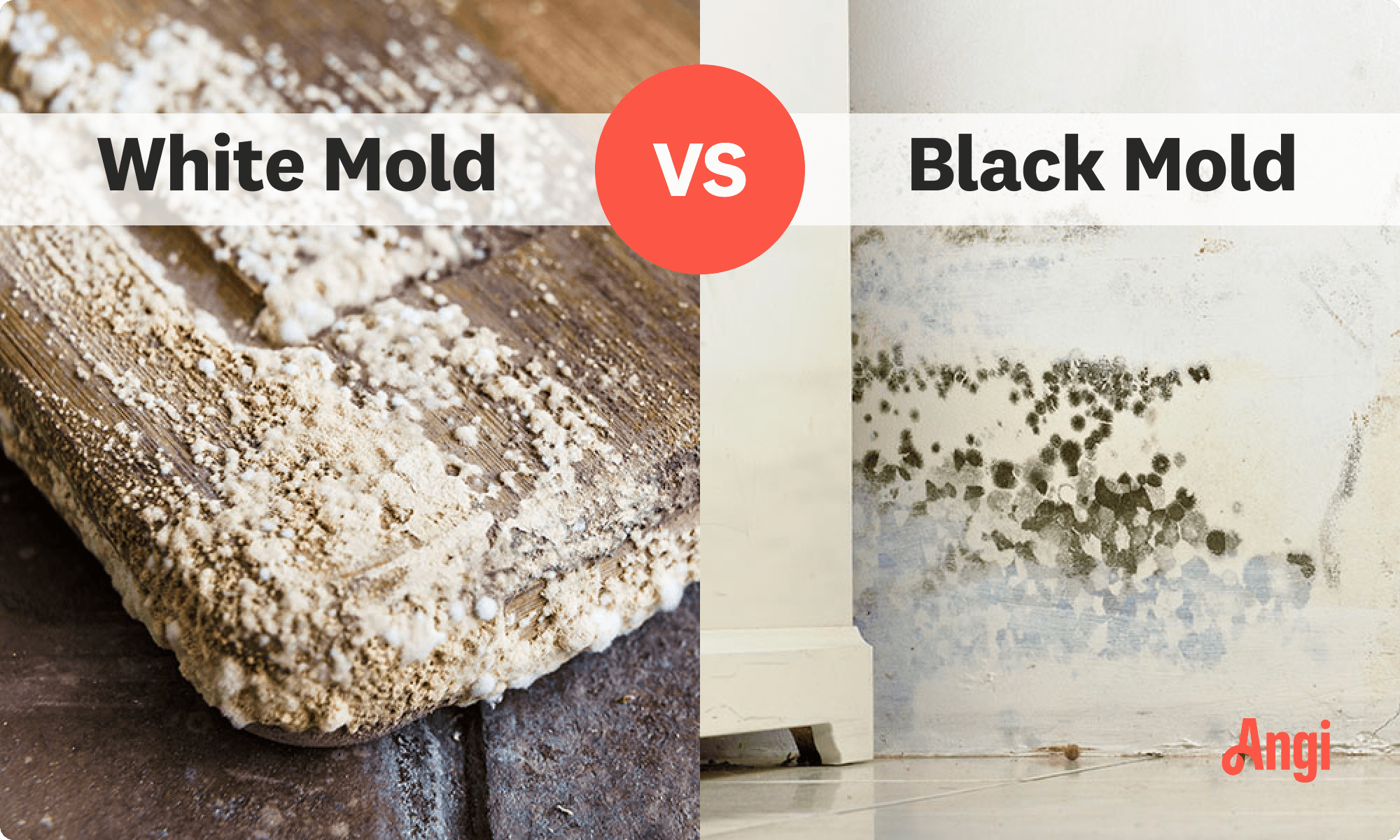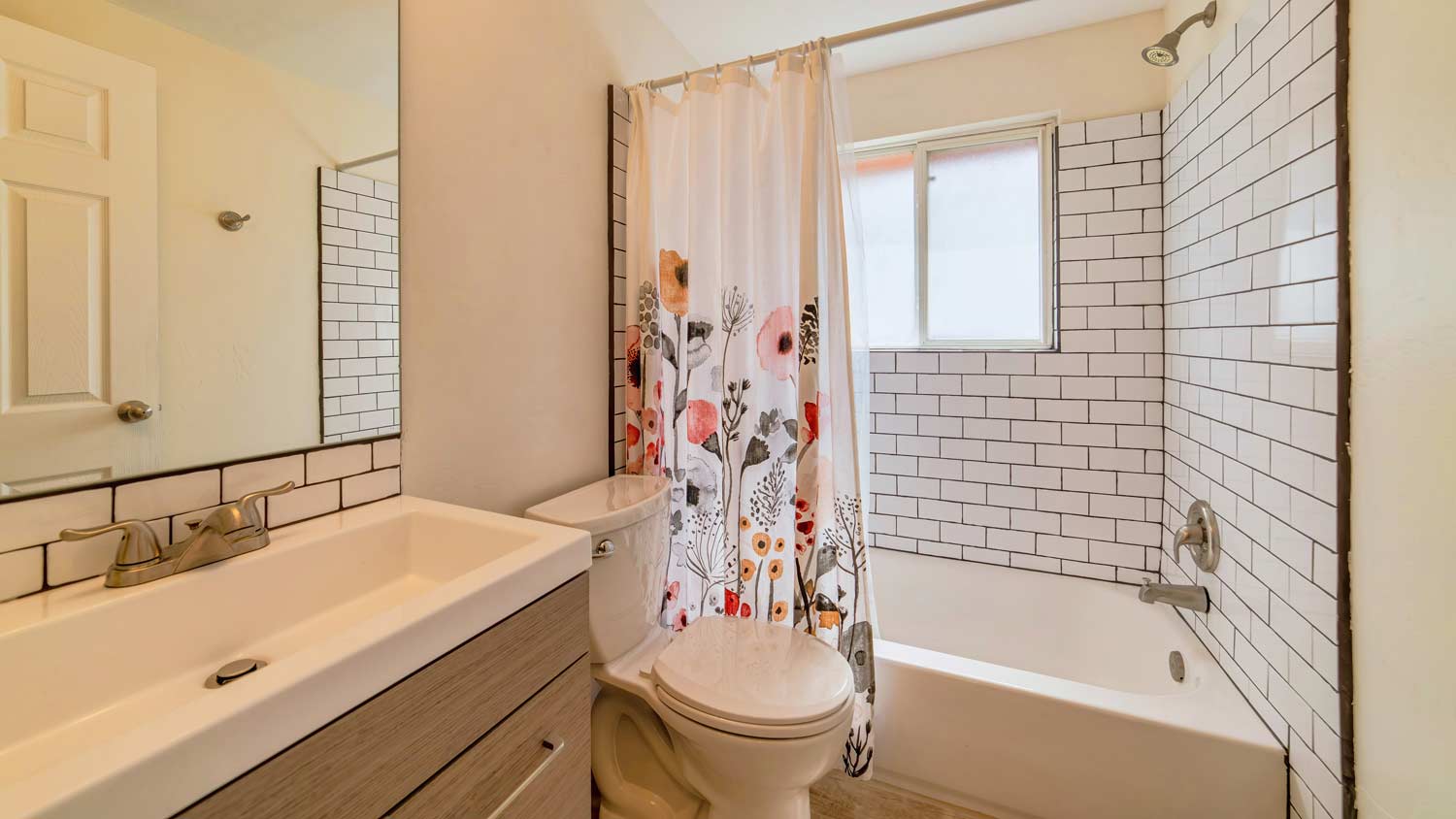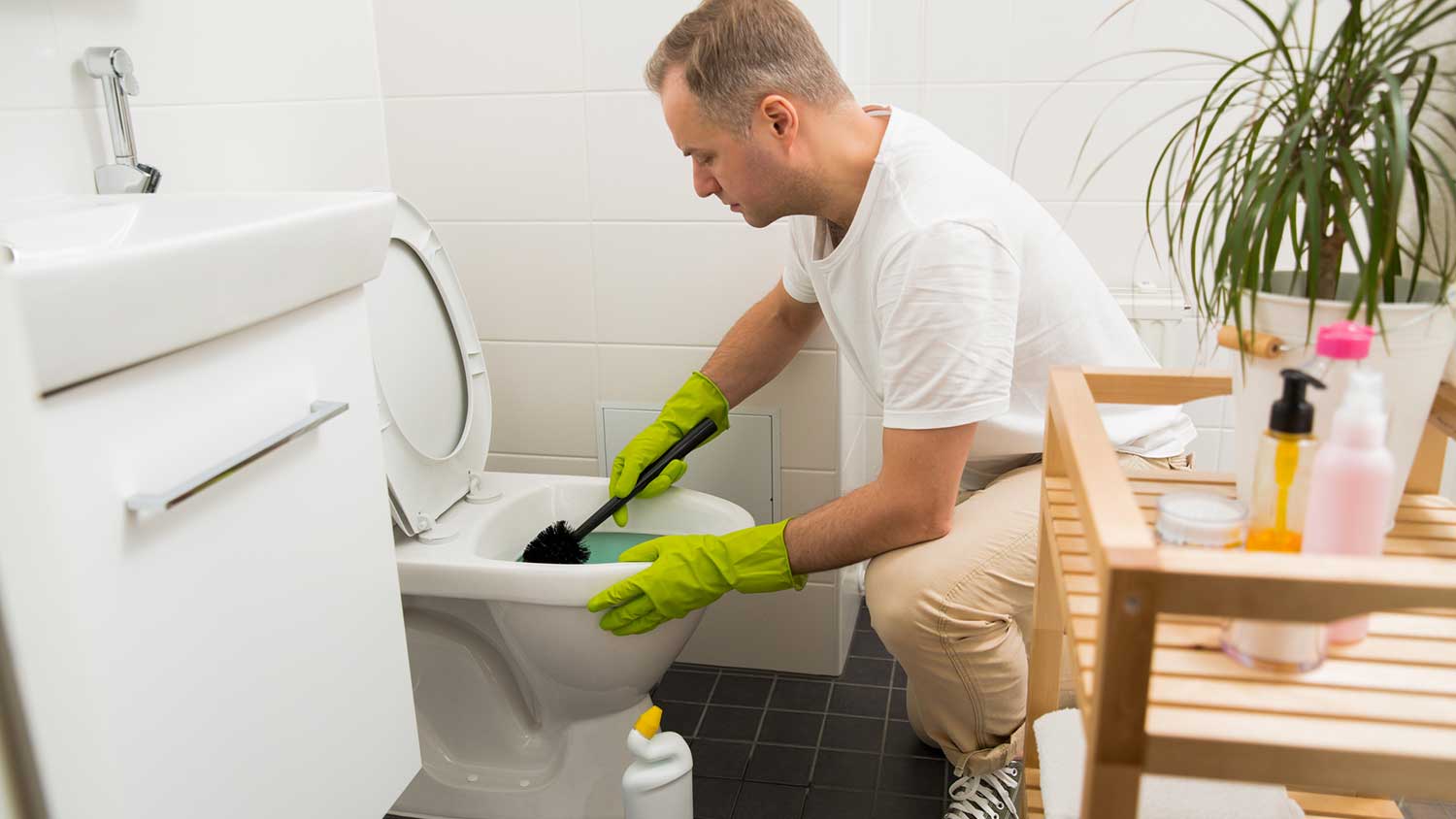What’s the Difference Between White Mold and Black Mold?
Knowing how to identify white mold vs black mold can make remediation easier


Black mold can be very damaging to your health, whereas white mold poses less of a risk.
White mold is lighter in color and black mold is quite dark.
Humid environments are the perfect breeding spot for both types of mold.
It’s never fun finding mold in your home—especially if it’s black mold. Chances are, you have already heard that black mold is dangerous for your health, but other molds can cause problems in your home. For example, while white mold is not as dangerous as black mold, it can be potentially harmful. Not sure what type of mold is plaguing your home? Keep reading for a breakdown of white mold vs black mold.
What Is Mold?
Mold is a type of fungi that produces tiny spores to reproduce. According to the Environmental Protection Agency (EPA), mold spores continually waft through indoor and outdoor air. When they land in moist areas, they begin growing on the material to survive.
Mold thrives on household materials like wood, drywall, carpet, and furniture. It can spread quickly and become a problem if it isn’t properly treated. The best way to hanlde mold growth in your home is through moisture control and hiring a local mold removal pro when it appears.
Addressing household mold is important because it can cause allergic responses, such as hay fever, sneezing, runny nose, red eyes, and dermatitis.
White Mold vs. Black Mold
Mold is a common problem in homes and can come in various colors, with white and black molds being two of the most prevalent types. Despite their similar names, these molds differ significantly in terms of appearance, health risks, and preferred habitats. Below is a comparison chart that highlights the main differences between black mold versus white mold.
| Type of Difference | White Mold | Black Mold |
|---|---|---|
| Color | White or light gray | Dark greenish-black |
| Texture | Powdery or fluffy | Slimy or fuzzy |
| Health Risk | Low for most people | High health risk |
| Toxicity | Generally non-toxic | Potentially harmful |
| Preferred Environment | Cold, damp, humid | Warm, humid |
| Common Places | Basements, bathrooms | Basements, bathrooms |
White Mold vs. Black Mold: Key Differences
Mold growth is a common concern in households, and understanding the differences between the various types of mold is essential for identification and remediation. If you are uncertain of what type of mold is in your home, or what your next steps should be, you can always hire a mold inspector near you. Mold can be a very serious issue, so often, hiring a professional is the best course of action to prevent this problem from worsening. It’s a good idea to request quotes from a few different mold inspection companies to get a better idea of what a fair mold inspection cost is. The same goes for learning more about mold remediation costs if you need to pursue remediation.
Here is how white mold and black mold differ, as well as the characteristics they share.
Color
One of the easiest ways to determine if you have white or black mold in your home is by the color of the mold. White mold typically appears in shades of white or light gray. Black mold is characterized by its dark black or greenish-black color. This distinction in coloration is one of the primary factors used in identifying the type of mold present in a particular environment.
Texture

While the color should be a giveaway, another way to confirm if a mold is white or black is by taking a closer look at the texture. Black mold exhibits a slimy or fuzzy texture, often appearing as patches with a moist, sticky feel. When you find white mold, it will have a powdery or fluffy texture, giving affected surfaces a fuzzy appearance. The variance in texture is a key feature used by experts to differentiate between the two molds.
Health Risk
Both white and black molds can pose health risks, but luckily, white mold generally has a lower health risk for most people. In contrast, black mold is considered more dangerous, especially for sensitive individuals, as it can produce mycotoxins, potentially causing severe health problems such as respiratory issues, skin irritation, or allergic reactions.
Toxicity

Black mold is toxic, and that’s why you hear warnings about it–white mold is generally non-toxic. The concern surrounding black mold primarily arises from its ability to produce mycotoxins, potent compounds known to be toxic to both humans and animals. These mycotoxins, released by certain molds under specific conditions, can lead to severe health problems when inhaled or come into contact with skin. Respiratory issues, skin irritations, allergic reactions, and even neurological problems are potential consequences of mycotoxin exposure. It's important to note that not all black molds produce mycotoxins, but the risk is significant enough to warrant immediate attention. Due to these health hazards, professional intervention is highly recommended when dealing with black mold.
In contrast, white mold is generally non-toxic, alleviating some of the immediate concerns associated with exposure. Nevertheless, while it might not produce mycotoxins, white mold can still trigger allergies and respiratory discomfort, underscoring the importance of addressing any mold infestation promptly and thoroughly.
Preferred Environment
Try to keep your home dry because humidity can lead to both white and black mold forming. White mold thrives in cold, damp, and humid conditions. In contrast, black mold prefers warm, humid environments and often develops in areas with water damage.
Common Places

If you suspect there may be mold lurking in your home, there are a few popular spots for black and white mold to grow. Black mold, thriving in damp and water-damaged environments, frequently manifests in spaces plagued by persistent moisture issues. Flooded basements and bathrooms with leaks provide ideal breeding grounds for black mold due to the constant presence of moisture. Any area within a home that suffers from prolonged dampness, whether due to leaks, inadequate ventilation, or flooding, becomes susceptible to black mold infestations.
White mold, on the other hand, tends to colonize areas characterized by elevated moisture levels. Basements, crawl spaces, and attics are common targets due to their tendency to trap moisture. Bathrooms, where high humidity is prevalent, also provide conducive conditions for white mold growth. In these spaces, condensation, leaks, or inadequate ventilation can create the perfect environment for white mold to flourish. The ability for white mold to grow in slightly cooler, moist conditions highlights the importance of vigilance in areas where moisture management is challenging, necessitating proactive measures to prevent mold growth and maintain a healthy indoor environment. Regular inspections and addressing any underlying moisture problems are key in preventing both black and white molds from establishing a foothold in homes.

Frequently Asked Questions
White mold is generally considered less harmful than black mold. While both molds can cause health issues, black mold is often more toxic due to the mycotoxins it produces, posing a higher risk, especially to sensitive individuals. However, any mold infestation should be treated seriously, and prompt remediation is necessary to prevent further growth and potential health problems.
Even though it is not as dangerous as black mold, white mold can still be harmful, especially for individuals with mold allergies or respiratory conditions. It can cause symptoms like nasal stuffiness, throat irritation, coughing, or skin irritation. Although less toxic than black mold, it can exacerbate existing health issues. Proper precautions, such as wearing protective gear and using appropriate cleaning agents, should be taken when dealing with white mold to minimize health risks.
To get rid of white mold, it's crucial to wear protective clothing, including a mask, gloves, and goggles, to avoid exposure. Begin by isolating the affected area and ensuring good ventilation. Clean hard surfaces with a mixture of water and detergent, scrubbing thoroughly. For absorbent materials like drywall or ceiling tiles, it may be necessary to remove and replace the contaminated sections. After cleaning, use a dehumidifier to reduce moisture levels, preventing mold regrowth.
To kill white mold on wood, a mixture of white vinegar and water (a 1:1 ratio) or a water and hydrogen peroxide combo can be effective. Spray the affected area and let it sit for a few hours before scrubbing the mold off. Borax mixed with water is another option; it not only kills the mold but also prevents future growth. Ensure the wood is completely dry after cleaning, and consider applying a wood sealer or paint to prevent moisture absorption, which discourages mold growth. Regular inspections and maintaining proper ventilation can also help prevent mold recurrence on wood surfaces.















